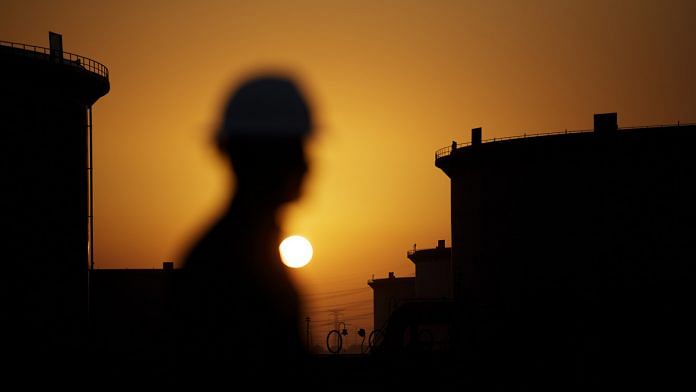It’s often said that the best time to buy is when there’s blood on the streets. The best time to sell oil, by contrast, is when the world’s gas tanks look empty.
That’s reason to temper the fear and excitement driving the oil market — even in the face of Wednesday’s Iranian rocket strike on two joint U.S bases in Iraq, which sparked the biggest intraday rally for Brent crude since a September attack on a Saudi production facility.
There are first- and second-order effects to any oil-price spike, and in the heat of the moment it can be hard to distinguish one from the other. The initial price surge comes not from a decline in production, but speculation and shrinking crude inventories as refiners rush to take deliveries for fear that costs are heading higher. For oil prices to rise to a permanently higher plateau, though, supply needs to be tightened at the wellhead.
That won’t happen imminently, as there was a decent amount of slack in the global oil market before the past week’s events. Commercial inventories in developed countries were headed toward 2.95 billion barrels this month — a relatively elevated level of more than 61 days’ forward supply — according to forecasts from the U.S. Energy Information Administration.
What of the longer-term picture? Saudi Arabia has about two million daily barrels of headroom at current output levels before hitting its production capacity of around 12 million barrels a day. Markets yawned at the Organization of Petroleum Exporting Countries’ announcement last month of largely cosmetic cuts of 500,000 barrels a day. Meanwhile, the shift of oil prices above $60 a barrel has made conditions for financing new wells in the U.S. shale patch more attractive, increasing the odds that the year-long decline in rig numbers there may turn a corner.
Of course, all this will be meaningless if the U.S. and Iran are headed toward a hot war that disrupts shipping through the Strait of Hormuz. But Iran’s choice of target suggests that isn’t terribly likely.
“As far as they were able, they selected a target for maximum publicity and minimal casualties, to placate a domestic audience,” said Rodger Shanahan, a Middle East specialist at the Lowy Institute in Sydney. The U.S. likely would have had advance warning of the attack, given their eavesdropping of Iranian military installations, he said, and it was calibrated to not alienate other countries too much. “Iran is honor-bound to retaliate, but knows it’s got to perform a balancing act at the moment.”
Doing further damage to the limited oil trade that Iran can still conduct also isn’t in the interests of the Islamic Revolutionary Guard Corps.
The IRGC — the parent organization of the Quds Force whose head, Qassem Soleimani, was assassinated by the U.S. last week — is deeply embedded in Iran’s economy. Its engineering company Khatam al-Anbiya has a near-monopoly on providing upstream services to the oil industry.
IRGC affiliates also stand to make money from transporting the small amounts of oil that are still getting out in spite of U.S. sanctions. The Grace 1, a tanker seized by British forces off Gibraltar last year en route to Syria, was rented and operated by the IRGC, a deputy commander of the force told a news agency affiliated with the group last year.
The IRGC’s best odds of enriching itself from the oil industry in the near future will come if Iran is able to salvage some remnants of its threadbare nuclear deal from the current crisis — in the wake of President Donald Trump losing the 2020 U.S. election, say, and hardline IRGC allies winning legislative elections next month.
Iran’s strike was “proportionate” and the country does not “seek escalation or war,” Foreign Minister Javad Zarif wrote on Twitter after the attacks. “All is well,” Trump typed out a few minutes later. That doesn’t sound like a spiral into conflict. The oil market can calm down, for the moment. -Bloomberg
Also read: In Iran’s missile attack on US bases, Trump can find a way to avert a wider war






